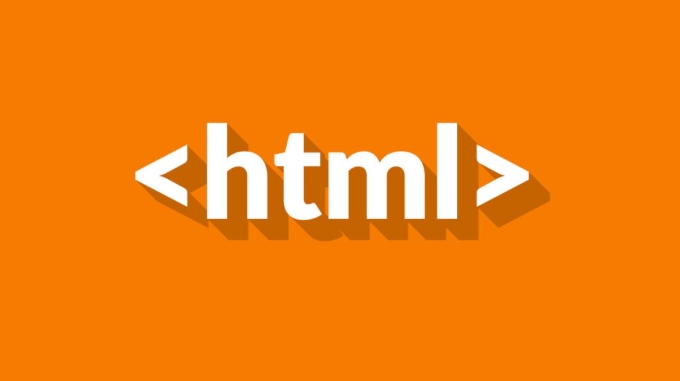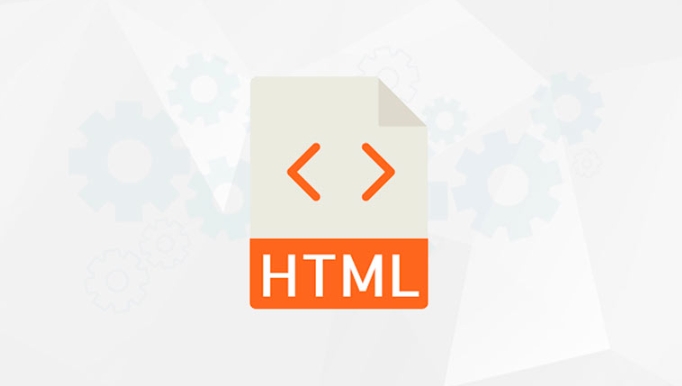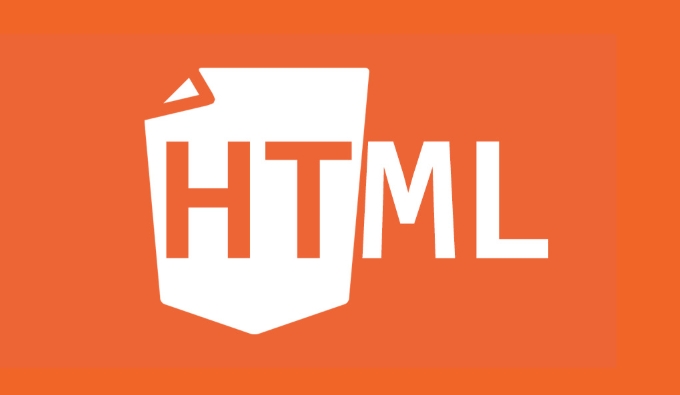The ping attribute is a native method in HTML for tracking link clicks. It sets the ping attribute value to one or more URLs in the or <area> tag. When the user clicks on the link, the browser sends a POST request to those URLs for recording. When using it, you need to ensure that the ping URL is accessible and fast response, support multi-address space separation, verify server reception, and pay attention to privacy and compliance issues; it is suitable for external link statistics, no JS tracking and A/B testing scenarios, but there are restrictions such as browser compatibility, plug-in interception and error-free processing. It is recommended to combine JS events to improve reliability.

Tracking the behavior of users clicking links in a web page usually requires relying on JavaScript or backend logging. But in fact, HTML itself provides a lightweight native solution: ping attribute. It can quietly send an HTTP POST request to the specified URL when the user clicks on a link, which is used to record click behavior without affecting the user experience.

What is ping attribute?
ping is an attribute supported by the <a></a> and <area> tags in HTML, allowing developers to specify one or more URLs for tracking clicks. When the user clicks on a link with ping attribute, the browser will send an empty POST request (without body) to these URLs in the background, notifying the server that a click event has occurred.
For example:

<a href="https://example.com" ping="https://tracker.example.com/log">Click me</a>
When the user clicks this link and jumps to example.com , the browser will also send a ping request to tracker.example.com/log .
The benefits of this approach are simple and efficient, and do not require additional scripts or use complex point-burning mechanisms.

How to use ping correctly for link tracking?
To implement effective link tracking, there are several key points to pay attention to:
Make sure the ping URL is accessible and fast : because the browser will send requests asynchronously, if the ping address responds slowly, it may affect the user experience or even be interrupted by the browser.
Support multiple ping addresses : multiple addresses can be set, separated by spaces:
<a href="..." ping="https://log1.example.com https://log2.example.com">External link</a>
Verify whether the server has received a ping request : the server can identify which link was clicked by checking the Referer header or custom parameters.
Pay attention to privacy and compliance issues : Although
pingdoes not carry sensitive information, relevant data protection regulations (such as GDPR) must be followed when it comes to user behavior tracking.- External link click statistics : For example, if you have advertisements or recommendation links to other websites on your website, you want to count the number of clicks.
- Lightweight tracking without JS : Some pages have disabled JavaScript for performance or security reasons, and
pingis an ideal alternative. - Behavior records in A/B tests : You can configure different ping addresses through different links to distinguish which version of the button or recommended content the user clicks.
- Not all browsers fully support
ping, especially some mobile browsers or older browsers. - Some browser plugins or privacy modes may block ping requests.
- There is no error handling mechanism, and it is impossible to know whether the ping was delivered successfully.
- In terms of security, an attacker can forge ping requests, so it is not suitable for use in scenarios with high security requirements.
Which scenarios are suitable for ping ?
ping attribute is particularly suitable for the following situations:
It should be noted that since ping is a request initiated by the browser, it cannot be used to conduct accurate user behavior analysis (such as dwell time, scroll depth, etc.), and is only suitable for simple event records such as "click".
Issues to be aware of
Although ping is convenient, there are some limitations and potential problems:
If you want to improve the reliability of tracking, you can use ping and JavaScript click events to create a dual guarantee.
Basically that's it. Although the ping attribute of HTML is niche, it can indeed play a good role in the right scenario. It does not require complex configurations and does not affect page performance. It is a tip worth knowing.
The above is the detailed content of Implementing HTML `ping` Attribute for Link Tracking. For more information, please follow other related articles on the PHP Chinese website!

Hot AI Tools

Undress AI Tool
Undress images for free

Undresser.AI Undress
AI-powered app for creating realistic nude photos

AI Clothes Remover
Online AI tool for removing clothes from photos.

Clothoff.io
AI clothes remover

Video Face Swap
Swap faces in any video effortlessly with our completely free AI face swap tool!

Hot Article

Hot Tools

Notepad++7.3.1
Easy-to-use and free code editor

SublimeText3 Chinese version
Chinese version, very easy to use

Zend Studio 13.0.1
Powerful PHP integrated development environment

Dreamweaver CS6
Visual web development tools

SublimeText3 Mac version
God-level code editing software (SublimeText3)

Hot Topics
 Applying Semantic Structure with article, section, and aside in HTML
Jul 05, 2025 am 02:03 AM
Applying Semantic Structure with article, section, and aside in HTML
Jul 05, 2025 am 02:03 AM
The rational use of semantic tags in HTML can improve page structure clarity, accessibility and SEO effects. 1. Used for independent content blocks, such as blog posts or comments, it must be self-contained; 2. Used for classification related content, usually including titles, and is suitable for different modules of the page; 3. Used for auxiliary information related to the main content but not core, such as sidebar recommendations or author profiles. In actual development, labels should be combined and other, avoid excessive nesting, keep the structure simple, and verify the rationality of the structure through developer tools.
 What are the essential HTML elements for structuring a webpage?
Jul 03, 2025 am 02:34 AM
What are the essential HTML elements for structuring a webpage?
Jul 03, 2025 am 02:34 AM
The web page structure needs to be supported by core HTML elements. 1. The overall structure of the page is composed of , , which is the root element, which stores meta information and displays the content; 2. The content organization relies on title (-), paragraph () and block tags (such as ,) to improve organizational structure and SEO; 3. Navigation is implemented through and implemented, commonly used organizations are linked and supplemented with aria-current attribute to enhance accessibility; 4. Form interaction involves , , and , to ensure the complete user input and submission functions. Proper use of these elements can improve page clarity, maintenance and search engine optimization.
 Implementing client-side form validation using HTML attributes.
Jul 03, 2025 am 02:31 AM
Implementing client-side form validation using HTML attributes.
Jul 03, 2025 am 02:31 AM
Client-sideformvalidationcanbedonewithoutJavaScriptbyusingHTMLattributes.1)Userequiredtoenforcemandatoryfields.2)ValidateemailsandURLswithtypeattributeslikeemailorurl,orusepatternwithregexforcustomformats.3)Limitvaluesusingmin,max,minlength,andmaxlen
 How to group options within a select dropdown using html?
Jul 04, 2025 am 03:16 AM
How to group options within a select dropdown using html?
Jul 04, 2025 am 03:16 AM
Use tags in HTML to group options in the drop-down menu. The specific method is to wrap a group of elements and define the group name through the label attribute, such as: 1. Contains options such as apples, bananas, oranges, etc.; 2. Contains options such as carrots, broccoli, etc.; 3. Each is an independent group, and the options within the group are automatically indented. Notes include: ① No nesting is supported; ② The entire group can be disabled through the disabled attribute; ③ The style is restricted and needs to be beautified in combination with CSS or third-party libraries; plug-ins such as Select2 can be used to enhance functions.
 Implementing Clickable Buttons Using the HTML button Element
Jul 07, 2025 am 02:31 AM
Implementing Clickable Buttons Using the HTML button Element
Jul 07, 2025 am 02:31 AM
To use HTML button elements to achieve clickable buttons, you must first master its basic usage and common precautions. 1. Create buttons with tags and define behaviors through type attributes (such as button, submit, reset), which is submitted by default; 2. Add interactive functions through JavaScript, which can be written inline or bind event listeners through ID to improve maintenance; 3. Use CSS to customize styles, including background color, border, rounded corners and hover/active status effects to enhance user experience; 4. Pay attention to common problems: make sure that the disabled attribute is not enabled, JS events are correctly bound, layout occlusion, and use the help of developer tools to troubleshoot exceptions. Master this
 Configuring Document Metadata Within the HTML head Element
Jul 09, 2025 am 02:30 AM
Configuring Document Metadata Within the HTML head Element
Jul 09, 2025 am 02:30 AM
Metadata in HTMLhead is crucial for SEO, social sharing, and browser behavior. 1. Set the page title and description, use and keep it concise and unique; 2. Add OpenGraph and Twitter card information to optimize social sharing effects, pay attention to the image size and use debugging tools to test; 3. Define the character set and viewport settings to ensure multi-language support is adapted to the mobile terminal; 4. Optional tags such as author copyright, robots control and canonical prevent duplicate content should also be configured reasonably.
 Debugging common HTML validation errors.
Jul 03, 2025 am 02:41 AM
Debugging common HTML validation errors.
Jul 03, 2025 am 02:41 AM
When encountering HTML verification errors, you must first clarify the problem and correct it according to the specifications. 1. When the required attributes are missing, the src and alt and a href of img should be completed; 2. When the tag nesting is incorrect, the structure should be clarified and the tags should be closed correctly to avoid confusion in nesting block-level elements; 3. When using invalid or discarded tags, you should refer to the MDN document to replace it with modern writing methods, such as replacing center and font with CSS; 4. When character encoding problems, add metacharset="UTF-8" and ensure that the file is saved in UTF-8 format to solve it.
 How to associate captions with images or media using the html figure and figcaption elements?
Jul 07, 2025 am 02:30 AM
How to associate captions with images or media using the html figure and figcaption elements?
Jul 07, 2025 am 02:30 AM
Using HTML sums allows for intuitive and semantic clarity to add caption text to images or media. 1. Used to wrap independent media content, such as pictures, videos or code blocks; 2. It is placed as its explanatory text, and can be located above or below the media; 3. They not only improve the clarity of the page structure, but also enhance accessibility and SEO effect; 4. When using it, you should pay attention to avoid abuse, and apply to content that needs to be emphasized and accompanied by description, rather than ordinary decorative pictures; 5. The alt attribute that cannot be ignored, which is different from figcaption; 6. The figcaption is flexible and can be placed at the top or bottom of the figure as needed. Using these two tags correctly helps to build semantic and easy to understand web content.






